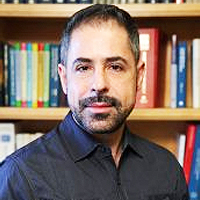Comparison of Lung Function of normal and persons with chronic low back pain and its relation with duration and severity of Chronic Low Back Pain
Published on: 13th October, 2017
OCLC Number/Unique Identifier: 7286424899
Introduction: Chronic low back pain is one of the most prevalent musculoskeletal disorders. Studies have shown certain relations between physical fitness and chronic low back pain (CLBP) by examine some measures of physical fitness. The aim of study was to measure lung function using winspiro PRO in patient with CLBP versus normal healthy individual, and relation of lung function with duration and intensity of CLBP.
Methodology: The study population is comprised of a total of 120 adult persons. 60 subjects with chronic low back pain (41 male and 19 female) with a mean age of 30.69 years (+4.34) and 60 normal individual (39 male and 21 female) with mean age of 29.00 years (+5.34).
Results:The result of comparison of the respiratory parameter forced vital capacity (FVC), and maximal voluntary ventilation (MVV) of individual with CLBP show a significant difference as compare to the normal healthy population. In unrelated ‘t’ test the patient with CLBP (N=60) of age 30.51(SD±4.33), height 169cm (SD±1.23), weight 57.86(SD±7.73) and body mass index (BMI) 20.46 (SD±2.54) show a significant difference in respiratory parameter FVC ( t=17.244, P=0.000), and MVV ( t=11.048, P=0.000) as compare to the normal healthy persons (N=60) of age 29.79 (SD±5.28), height 170cm (SD±1.13), weight 59.40(SD±6.97) and BMI 21.59 (SD±3.29).In patient group- FVC range is 34.0% to 75.00% (52.85%±9.30). MVV range is 45.0% to 86.80%. (63.11%±12.06)In control group FVC range is 63.90% to 98.83% (83.63%±7.59). MVV range is 63.00% to 98.00% (78.96%±7.86).
Conclusions:The overall result of the study show that there is a significant difference in the respiratory parameter that is FVC (forced vital capacity), and the MVV (maximum voluntary ventilation) in persons with chronic low back pain as compare to the healthy person of same age, height, weight and body mass index (BMI).
Effectiveness of Soft Tissue Mobilisation as an adjunct to the Conventional Therapy in patients with Ankylosing Spondylitis
Published on: 5th January, 2018
OCLC Number/Unique Identifier: 7869163621
Introduction: The HRMT (Human Resting Myofasial Tone) factor plays an important role to initiate the trigger the inflammation at the disease site in Ankylosing spondylitis (AS) as in all spondyloarthropathies. The incidence of fibromyalgia is higher in AS and a limiting factor to undergo the exercise program.
Aim of the study: To know the effectiveness of soft tissue mobilisation in patients with Ankylosing Spondylitis when it used as an adjuncts to the conventional exercises.
Methodology: 40 subjects were randomly assigned in to experimental and conventional group. Experimental group (n=20) received conventional exercises along with soft tissue mobilisation and the conventional group (n=20) received only conventional exercises (flexibility exercises, aerobic exercise and breathing exercise) for a period of 4 weeks, 5days/week.
Results: The result of the study showed that both the conventional and experimental groups improved significantly in stiffness, pain and physical function aspects after treatment. However the experimental group had a greater change as compared to conventional group.
Conclusion: The study demonstrates that soft tissue mobilisation has an effect when it used before the conventional exercise in patients with ankylosing spondylitis.




